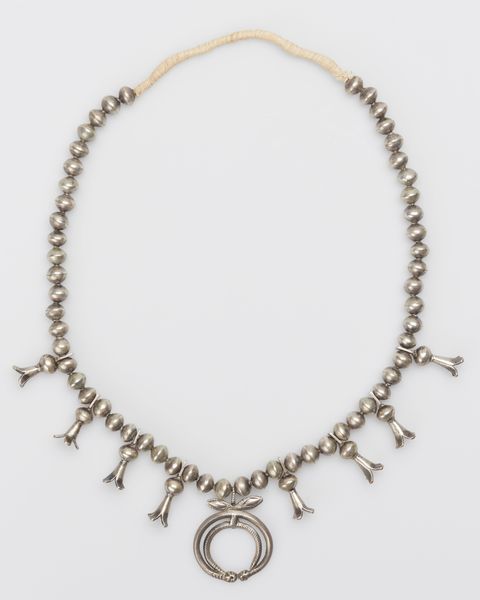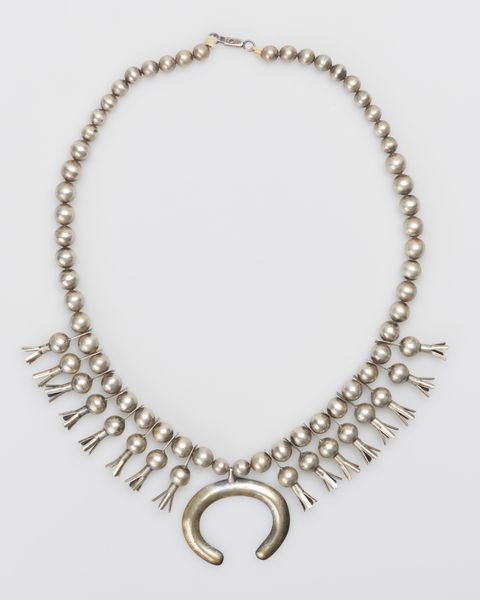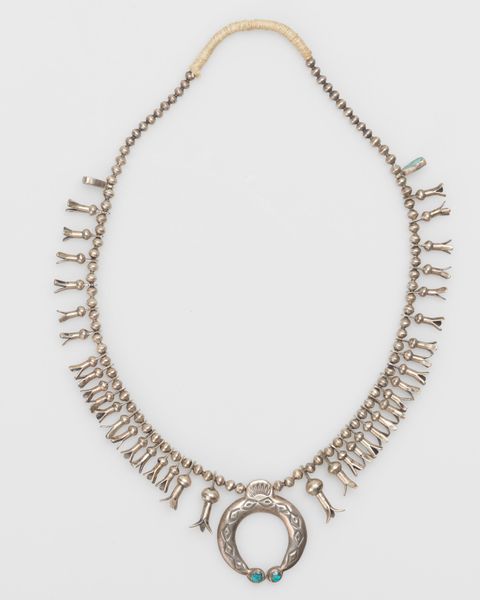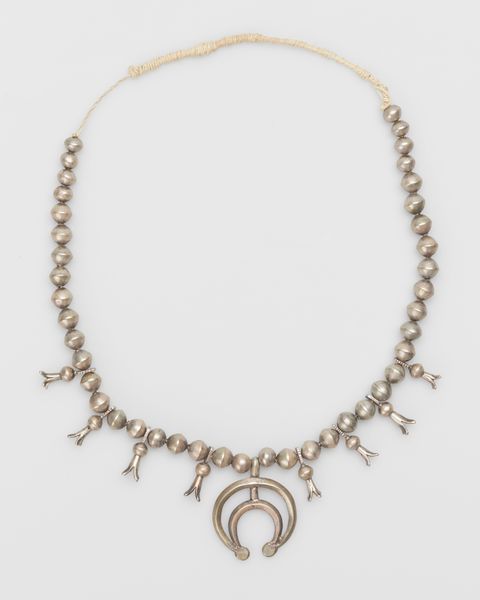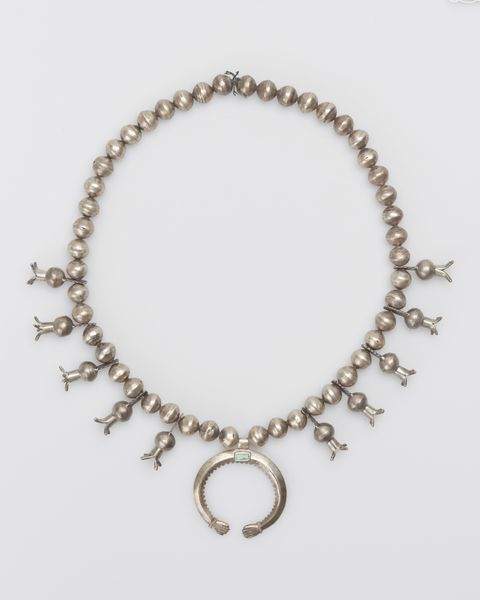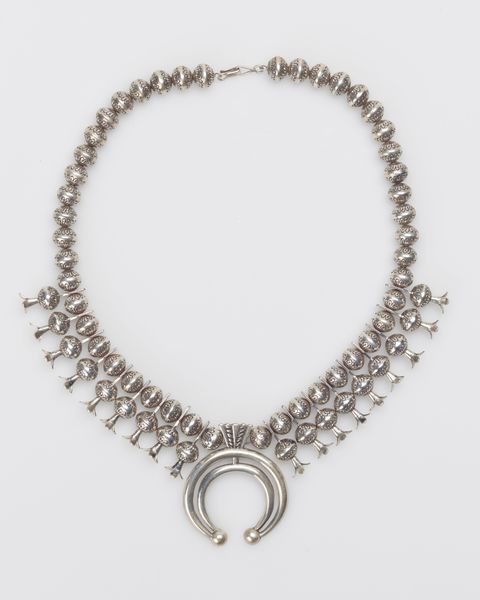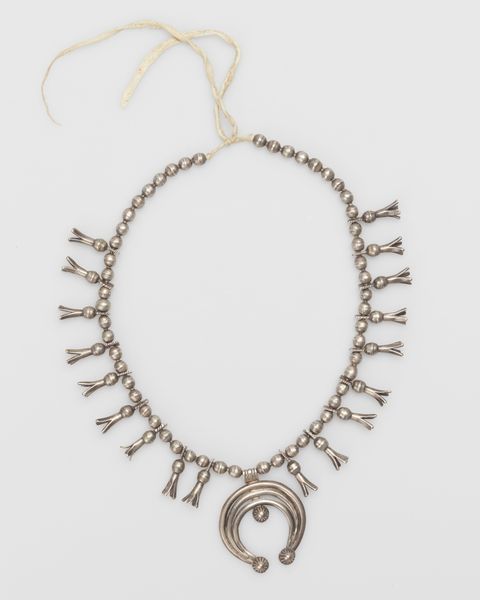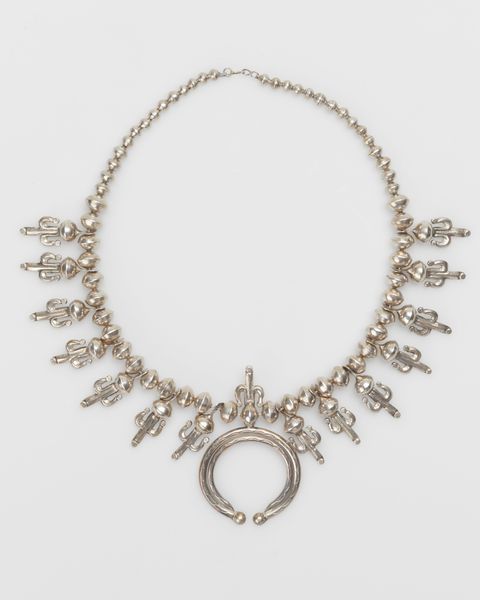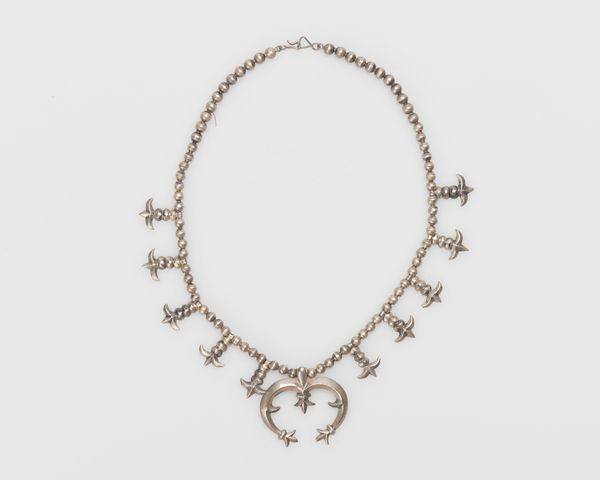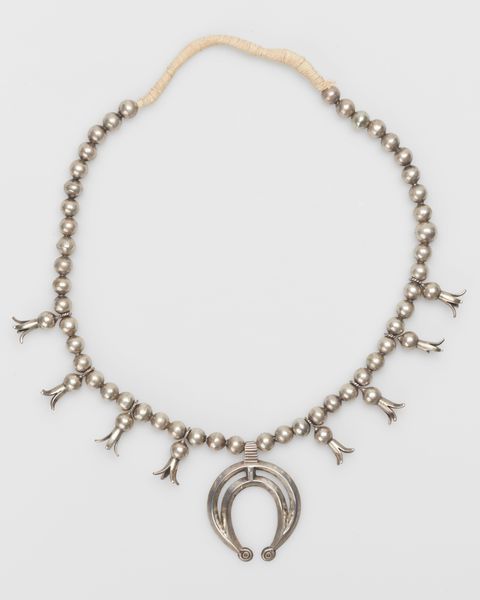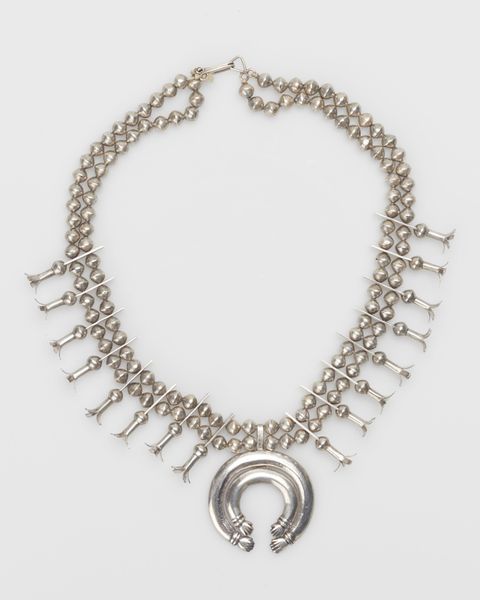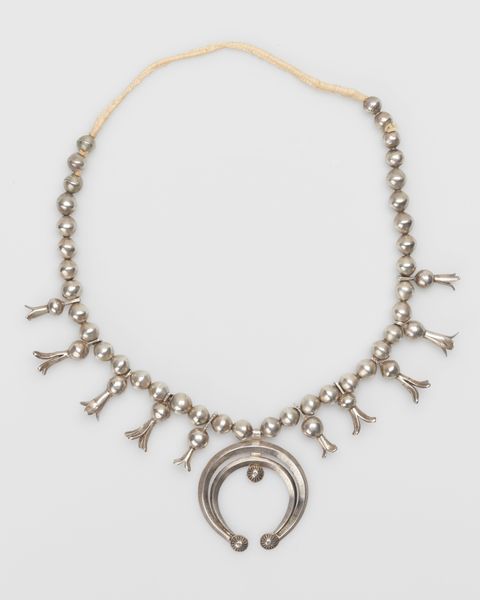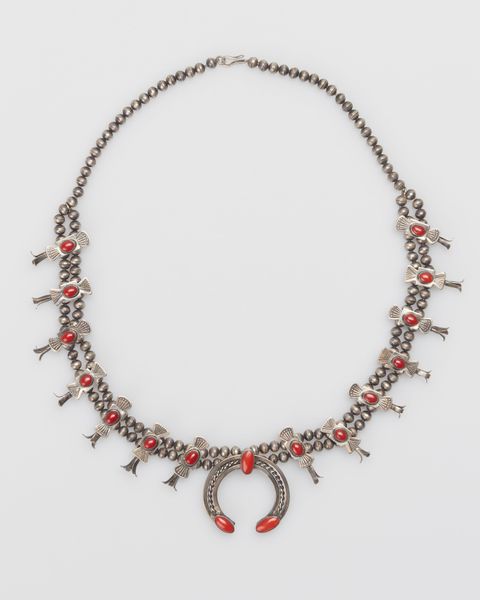
silver, metal
#
silver
#
metal
#
indigenous-americas
Copyright: Public Domain
Editor: So, this necklace crafted from silver by a Navajo artist, dates back to between 1900 and 1930. There is something about its symmetry and simplicity that is very captivating, though the material has a raw feel to it. How do we see this object within the history of Navajo art? Curator: A crucial perspective involves acknowledging the Navajo Nation’s complex interaction with settler colonialism. These silver necklaces, especially those with "squash blossom" designs, emerged during a period of significant cultural exchange and economic pressure. Editor: Exchange? Pressure? Curator: Yes, consider how the introduction of silverworking techniques impacted Indigenous economies. The availability of new materials and trade routes, imposed by the settlers, shaped artistic production. Editor: So, it's not just a beautiful adornment, but a result of historical dynamics? Curator: Exactly. The squash blossom motif itself carries layers of meaning. It's often linked to agricultural fertility, but its adaptation in Navajo jewelry demonstrates how Indigenous artisans selectively integrated external elements. And we also should consider how these objects were subsequently received, traded, and commodified by a non-Native market, transforming it to an element of public interest. Do you think that changes how we see the piece? Editor: Absolutely. Thinking of it that way, I realize that a piece of jewelry represents a complex history, including the ways power operates within culture. Curator: Precisely. This object encapsulates the fusion, appropriation, and resilience inherent in the Navajo experience. By understanding the forces at play, we are closer to perceiving its multiple layers. Editor: It gives a totally different angle from my initial reaction! I appreciate understanding that a piece like this exists in relation to shifting cultural power dynamics.
Comments
No comments
Be the first to comment and join the conversation on the ultimate creative platform.
